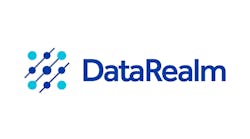ANN ARBOR, Mich. — ODVA has announced new editions to its specifications, in which is included a defined energy object that will help manufacturers aggregate and view energy usage at various levels of the enterprise. ODVA's biannual update of its network specifications enables manufacturers to meet an ever-increasing scope of industrial automation applications with the EtherNet/IP, DeviceNet, CompoNet and ControlNet technologies.The updated specifications feature work completed by ODVA's Energy Applications Special Interest Group in defining an energy object that will be used to report energy for all energy and resource types. This energy reporting methodology is harmonized with energy-reporting standards defined by the Global Reporting Initiative (GRI), whose mission is to create conditions for the transparent and reliable exchange of sustainability information. ODVA's energy object aligns with the Environmental Indicator Protocol EN3 of the G3 Sustainability Reporting Guidelines, which is the foundation of the GRI reporting framework.The energy object will enable manufacturers to build a virtual "Energy Usage Tree" representing energy consumption throughout an enterprise. An electrical energy object is also defined to provide electrical energy-specific data reporting capabilities and diagnostics for the electrical energy consumers and producers found within the various levels of an industrial facility. A non-electrical energy object is also defined to provide unified reporting of energy consumption and production of non-electrical energy data such as natural gas, fuel oil and steam."For manufacturers who want to see how energy objects are implemented, ODVA created an at-a-glance summary of the energy specifications. This summary, available at www.odva.org, will help nonmembers and members easily see how they can adopt the objects into new products," said Katherine Voss, executive director, ODVA.The new editions of the ODVA specifications include 26 updates, such as:
- A Target Connection List Object: This defines a new object that reports a device's connection parameter values, reports the default connection targets to improve a device's "plug and play" capability, and reports any additional connection targets for the dynamic creation of devices.
- EtherNet/IP Switch Device Profile: Defines a Managed EtherNet/IP switch device profile. The objective of this profile is to foster interoperability and promote interchangeability of similar switch device types. This configuration and diagnostic information will be used by industrial controls users, field device tools and device type managers (FDT/DTM) and operations managers to provide "plug-and-work" capabilities within distributed control systems.
- The EtherNet/IP Specification, comprised of The CIP Networks Library, Volumes One (Edition 3.11), Two (Edition 1.12) and Seven (Edition 1.5);
- The DeviceNet Specification, comprised of The CIP Networks Library, Volumes One (Edition 3.11), Three (Edition 1.12) and Seven (Edition 1.5);
- The ControlNet Specification. comprised of The CIP Networks Library, Volumes One (Edition 3.11), Four (Edition 1.7) and Seven (Edition 1.5);
- The CompoNet Specification, comprised of The CIP Networks Library, Volumes One (Edition 3.11), Six (Edition 1.7) and Seven (Edition 1.5);
- The CIP Safety Specification, comprised of The CIP Networks Library, Volume Five (Edition 2.5).



